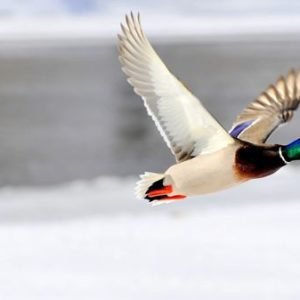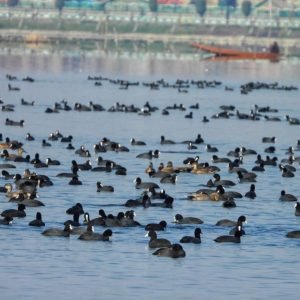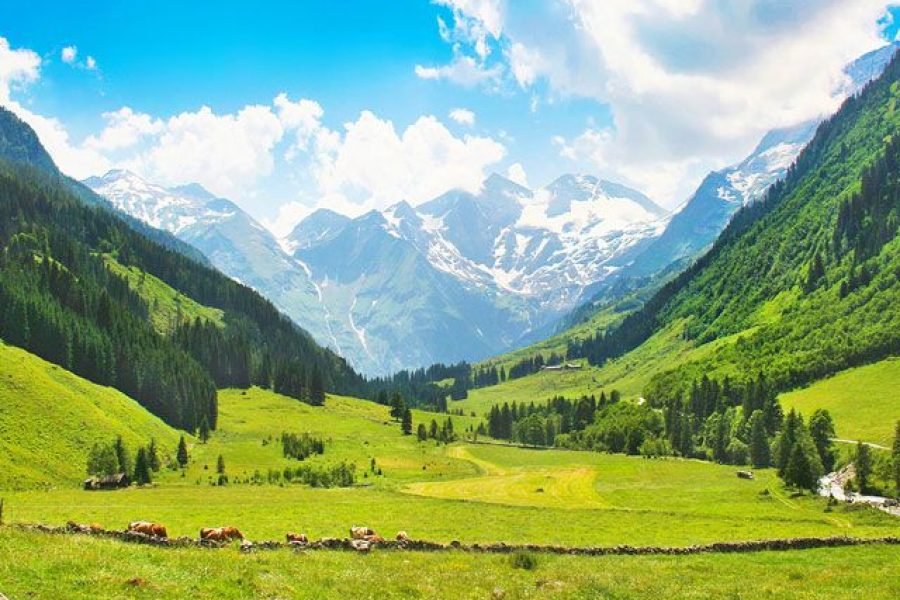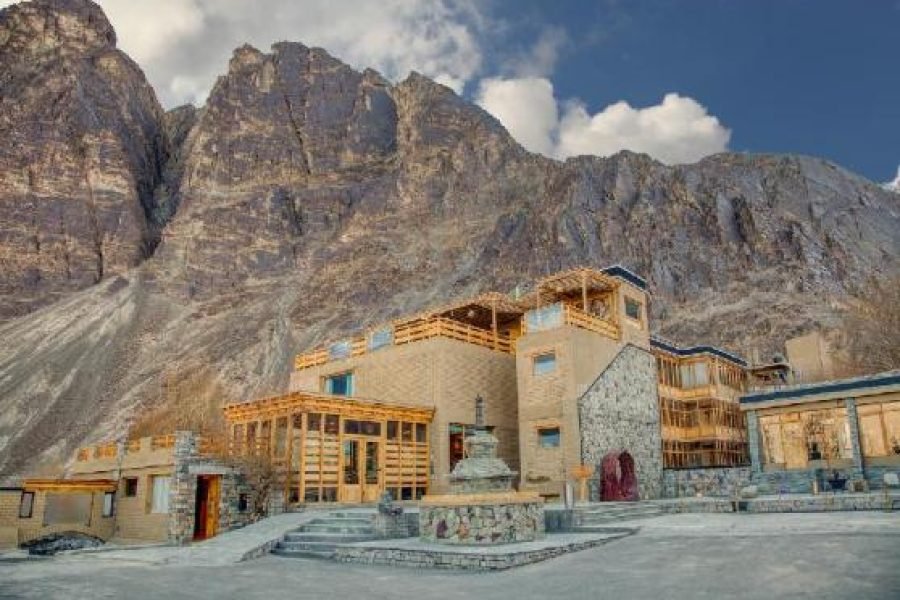Hokersar Wetland : Migratory Crossroads of the North





Table of Contents
Toggle1. Introduction
Hokersar Wetland is a treasure for the birdwatcher, nature lover, and environmentalist, being an ecological wonder. Hokersar, which is about 10 km from Srinagar, is one of the most important wetlands in the Kashmir Valley and serves as a source of habitat support for biodiversity, particularly regarding the perspectives of migratory birds, flood-water regimes and water purification.
Spread over almost 13.75 square kilometers, Hokersar Wetland forms part of the vast wetland system of Jammu and Kashmir, with a sight of great splendor, where marvels of rich flora and fauna adorned the mighty Himalayan ranges. The entire aspect of Hokersar Wetland, wetland’s ecological value to practical travel and back about wetland, is covered in this article.
2. Overview of Hokersar Wetland
2.a. Location and Geography
Hokersar Wetland is situated in the district of Baramulla in the state of Jammu and Kashmir. Hokersar is a high-altitude wetland, standing at approximately 1,583 meters above sea level, covering an area of about 13.75 square kilometers. It is reconnected to the Jhelum River through a complex network of channels transporting water through to and out of the wetland which sustains its ecosystem.
The wetland is part of the larger system of Kashmir Valley and thus inherits its climatic conditions such as cool summers and severe winters. The wetland is in effect frequently partially frozen during winter, thus offering a special scope for studying wildlife interactions under cold conditions.
2.b. Historical and Cultural Significance
For several hundred years, the wetland has held importance, with the local community revering it for supporting populations of waterfowl and flood regulation. Wetlands such as Hokersar are closely integrated into the social fabric of Kashmir, with ecological services supporting agriculture and livelihoods dependent upon water sources. In its historical context, Hokersar was much larger but has gradually reduced through various human activities and urbanization among other encroachments.
3. Ecological Importance
3.a. Vegetation
The vegetation of Hokersar Wetland comprises submerged, emergent, and floating plant species. These provide habitat and food to many birds, fish, and invertebrates. Some of the common flora species include Typha, Phragmites, Trapa natans (water chestnut) and several others. Aquatic vegetation occupies most of the wetland and is essential for nurturing the rich ecosystem by providing nutrients as well as shelter to a number of organisms.
3.b. Fauna
Hokersar Wetland is reported to be one of the major wetlands for wintering migratory birds. Each winter, it offers habitat to a fantastic number of species of migratory birds originating from Siberia, Central Asia, and Northern Europe. Some of the key species are as mentioned below:
i. Mallards (Anas platyrhynchos)
ii. Gadwalls (Mareca strepera)
iii. Northern Pintails (Anas acuta)
iv. Teals (Anas crecca)
v. Common Mergansers (Mergus merganser)
In addition, Hokersar supports a considerable number of species of amphibians, reptiles, and fish. Some species of fish of the wetland are said to breed naturally and also form an important component of the traditional fishing practices in the locality.
3.c. Migratory Birds
Between October and March, Hokersar turns into a haven for birds since more than half a million migratory birds come to the region every year. The spectacle of colorful and exotic birds moving about over the white landscape makes it a treat to watch.
Some of the rare species that have a following are:
i. Greylag Goose (Anser anser)
ii. Ferruginous Duck (Aythya nyroca)
iii. Eurasian Wigeon (Mareca penelope)
iv. Common Shelduck (Tadorna tadorna)
The wetland is important as a wintering ground, therefore a stopover for the birds to make over such long migrations.
3.d. Conservation Status
Hokersar Wetland is an acknowledged Ramsar Site under the Ramsar Convention on Wetlands of International Importance. In this regard, protection of the wetland will have to be undertaken seriously against the ongoing degradation processes due to urban encroachment, agricultural runoff, and illegal hunting. Several organizations at local and international levels are currently engaged in activities related to conservation and restoration of this fragile ecosystem.
4. Best Time to Visit Hokersar Wetland
4.a. Summer (May to September)
Summers are pretty bearable in Hokersar. If the weather comes into play for the tourists liking sunny days, then undoubtedly these months can be surely taken into account to visit the wetland. The wetland is lush green as it is covered by aquatic flora during these months, though there is less population of migratory species. The resident species are very abundant and vibrant flora facilities nature walks and snaps during the winter time.
4.b. Winter (October to March)
Winter is the best time for birding as thousands of migratory birds haunt this wetland to avoid the cold of their northern breeding grounds. Cold climate, snow-clad surroundings, and cool air greet one’s senses and add to the charm of Hokersar Wetland creating something of enchantment. Though at times it can be as low as 0°C/-10°C in temperatures, the recompense for braving the chill is unrecompensed.
5. How to Reach Hokersar Wetland
5.a. By Air
The nearest airport to Hokersar Wetland is the Srinagar International Airport, falling at a distance of around 16 kilometers. For travelers, Srinagar offers fabulous connectivity with major Indian cities including New Delhi, Mumbai, and Bengaluru. From this international airport, one can take a taxi or local transport to reach Hokersar.
5.b. By Train
The closest railway station to Hokersar is Jammu Tawi, which is about 300 kilometers. It’s accessible from most of the major Indian cities, but beyond that, you will have to hire a taxi or take the bus from Jammu to Srinagar, and from there, it’s relatively a shorter drive into Hokersar.
5.c. By Road
Road connectivity from Srinagar and other major towns of Jammu and Kashmir is quite good. There is National Highway 1, which makes easy access from Srinagar to Hokersar. Even there are regular plying of private and government buses between Srinagar and Hokersar. If you want to travel more comfortably and conveniently, you can hire a taxi.
6. Activities at Hokersar Wetland
6.a. Birdwatching
Hokersar Wetland is a paradise for birdwatchers. More than half a million migratory birds pass through its gates every year. One can trek the wetland with binoculars and camera to view birds freely in their natural environment. This can be done in the very early morning as dawn is the birds’ most active period.
6.b. Photography
Beautiful landscape, Hokersar Wetland, with rich avifauna. Misty mornings, snowpeaked ranges and glistening waters provide a perfect backdrop for capturing the beauty of the wetland. This has been a great opportunity, whether a novice or professional photographer, at hone their skilmsmanship in the light wildlife photography.
6.c. Nature Walks
The wetland is a place of serene conditions that provide an atmosphere to relieve the hustle and bustle of city life. Walk freely on the sign posted paths and absorb the peaceful environment around you. Nature walks are particularly good during early morning or late afternoon when wildlife is at its most active and scenery is at its most colorful.
6.d. Boating
Some months allow a boat ride in Hokersar Wetland. It becomes very much possible to bring visitors closer to the heart of the wetland. This gives an altogether different view of the ecosystem and opportunities for viewing of birds and other wildlife at close quarters. Most of the boat rides are arranged with local guides, who can also acquaint the visitor about the wetland’s ecologic significance.
7. Local Attraction Near Hokersar Wetland
7.a. Srinagar
Only 10 km from Hokersar, any visit to Jammu and Kashmir will find a major destination in Srinagar. Beautiful gardens, houseboats, or the picturesque Dal Lake, Srinagar provides the perfect complement to your wetland adventure. Don’t miss seeing the fabled Mughal Gardens, Shankaracharya Temple, and a Shikara ride on the Dal Lake.
7.b. Wular Lake
About 34 kilometers from Hokersar is Wular Lake, which is one of the largest freshwater lakes in Asia. It is a very important and crucial ecological and economic asset because of its support to the fishing and agricultural needs of the region. For the birdwatcher, this place is yet another good spot, especially during the months of migration.
7.c. Gulmarg
A two-hour drive from Hokersar takes you to the beautiful hill station of Gulmarg that is famous for its meadows and snow-clad peaks. It’s a major skiing destination during the winter and offers panoramic views of the Himalayan ranges.
8. Accommodation Options
8.a. Hotels in Srinagar
As Hokersar Wetland is close to Srinagar, most the tourists prefer staying in the city and visit this wetland on a day trip from there. Srinagar offers accommodation options for all pockets, ranging from luxury hotels to budget guesthouses.
8.b. Homestays
For those who want to live closer to nature and mingle with the natives’ lives in the households, numerous homestays around Hokersar Wetland that provide simple and cozy accommodation are there. Staying in houses enables the tourist to enjoy the traditional Kashmiri hospitality and cuisine as well.
9. Travel Tips to Hokersar Wetland
9.a. Best Time for Birding: October to March as migrant birds are present in abundance.
9.b. Clothing: For winter visit, do not forget to pack layers, warm insulating elements and waterproof boots.
9.c. Photography and Camera Gear: A good pair of binoculars along with a telephoto lens for crisp bird photography images.
9.d. Permits: There is no entry fee to Hokersar Wetland, although one needs to check local regulations regarding photography or boating.
9.e. Guides: It is worthwhile to obtain the services of local guides for understanding the wetland ecosystem and probably take you to sites where hidden bird species have been sited.
10. Conclusion
The Hokersar Wetland is not only a bird haven but also an aggressive ecosystem which will display the natural charm of Jammu and Kashmir. Hokersar ranges from the most breathtaking landscape to avifauna life, and it has a lot in store for the nature lover and traveller to cherish during their time there. Serenity or thrill of adventure or ecological exploration is guaranteed by this place, so plan your visit responsibly and contribute to the fragile environment of conservation to be enjoyed by successive generations.
How to book a trip to Hokersar Wetland, India with Charzan Holidays?
For a seamless and exceptional booking experience, contact Charzan Holidays at reservations@charzan.in or call us at +919622224473
People ask FAQ's
1. Where is Hokersar Wetland located?
Hokersar Wetland is situated close to the city Srinagar of the Union Territory of Jammu and Kashmir, India. This wetland lies about 13 km northwest of the main city and forms one of the most important wetlands in the region. The approximately 13 sq km wetland area provides a home to the migratory birds and also maintains the ecological balance of the region.
2. What is the Hokersar Wetland famous for?
Hokersar Wetland is famous for its rich biodiversity and beautifies the landscape. It has been one of the most crucial stopovers for birds passing through it when migrating during winter. Many species of ducks and swans have visited this wetland of water fowls, along with a good number of aquatic plants, which provide an essential kind of ecological service to the area. Therefore, this is a highly visited place by birdwatchers.
3. Who is the queen of wetlands in Kashmir?
Hokersar Wetland in Kashmir is called the “Queen of Wetlands.” It is one among the vital habitats for the migratory birds, especially wintering ones. It boasts lush greenery and also offers diversity in wildlife throughout the region. It attracts birdwatchers and lovers of nature. So, it becomes important for maintaining the biodiversity in the region.
4. Hokersar Wetland is in which district?
Hokersar Wetland is located in the Srinagar district of the state of Jammu and Kashmir in India. This wetland is some 13 km northwest of Srinagar city, hence forming an important wetland ecosystem. It is one of the most prized habitats for several migratory birds, and often during the winter season, flocks are seen in the grassland. It is an internationally recognized wetland under the Ramsar Convention.
Frequently Asked Questions
1. What is Hokersar Wetland? | |
| Hokersar Wetland is a significant wetland located near Srinagar in Jammu and Kashmir, known for its rich biodiversity and as a crucial habitat for migratory birds. | |
2. How do I reach Hokersar Wetland? | |
| Hokersar Wetland is approximately 14 kilometers from Srinagar. You can reach it by hiring a taxi or taking a local bus. | |
3. What are the main attractions at Hokersar Wetland? | |
| Attractions include the diverse bird species, scenic views, and opportunities for birdwatching, photography, and enjoying the tranquil environment. | |
4. When is the best time to visit Hokersar Wetland? | |
| The best time to visit is from October to March, during the migratory season when many species of birds visit the wetland. | |
5. Is Hokersar Wetland safe for tourists? | |
| Yes, Hokersar Wetland is generally safe for tourists. However, it’s advisable to stay updated on local conditions and follow any travel advisories. | |
6. Are there accommodations near Hokersar Wetland? | |
| There are limited accommodations directly near the wetland, but you can find various options in Srinagar, including hotels and guesthouses. | |
7. What activities can I do at Hokersar Wetland? | |
| Visitors can enjoy birdwatching, photography, nature walks, and exploring the beautiful surroundings. | |
8. Is public transportation available to Hokersar Wetland? | |
| Public transportation options are available, including buses and shared taxis from Srinagar, but hiring a taxi may be more convenient. | |
9. What should I pack for a trip to Hokersar Wetland? | |
| Pack comfortable clothing, binoculars for birdwatching, a camera, and any essentials like water and snacks. | |
10. Are there local customs to be aware of? | |
| Yes, it’s important to respect local customs and traditions, particularly regarding dress and behavior, especially in rural areas. | |
11. Is Hokersar Wetland suitable for families? | |
| Yes, Hokersar Wetland is family-friendly and offers a peaceful environment for children and adults alike to enjoy nature. | |
12. Can I find food options near Hokersar Wetland? | |
| While there are limited food options at the wetland, various eateries and restaurants can be found in Srinagar. | |
13. Are there guided tours available for Hokersar Wetland? | |
| Yes, local guides can be hired for tours, offering insights into the wetland’s ecology and the various bird species found there. | |
14. What is the nearest city to Hokersar Wetland? | |
| The nearest major city is Srinagar, which serves as the main hub for visitors to Hokersar Wetland and other nearby attractions. | |
15. Can I visit Hokersar Wetland in winter? | |
| Yes, visiting Hokersar Wetland in winter is possible, and it’s a great time to see migratory birds, but be prepared for cold weather. |









0 Comment